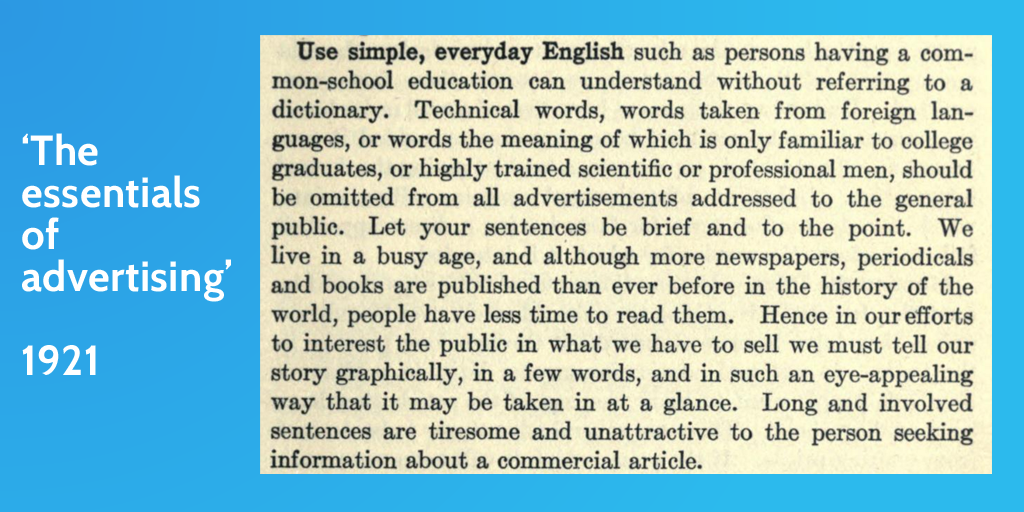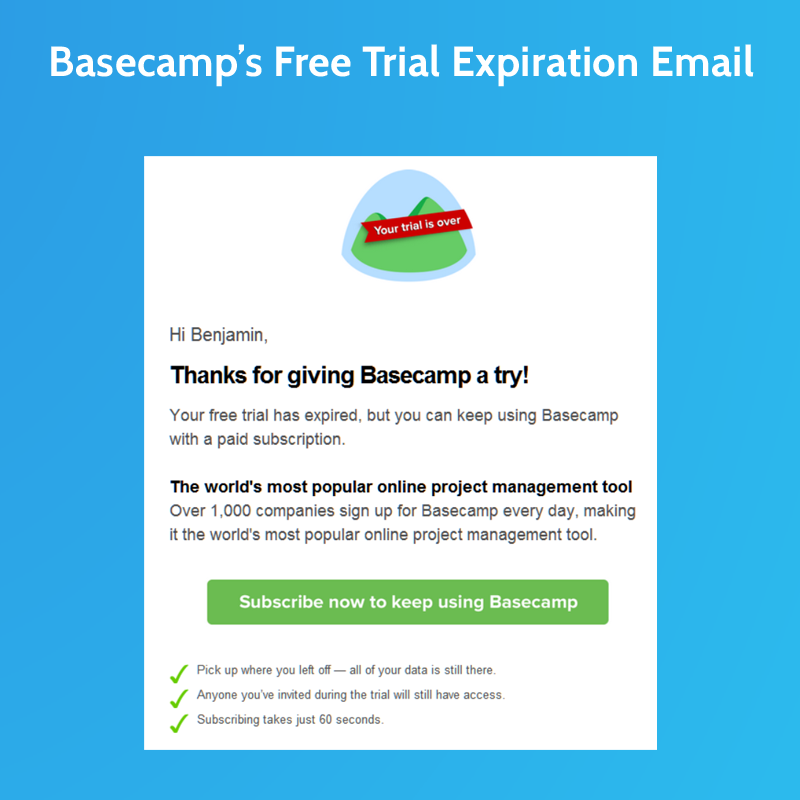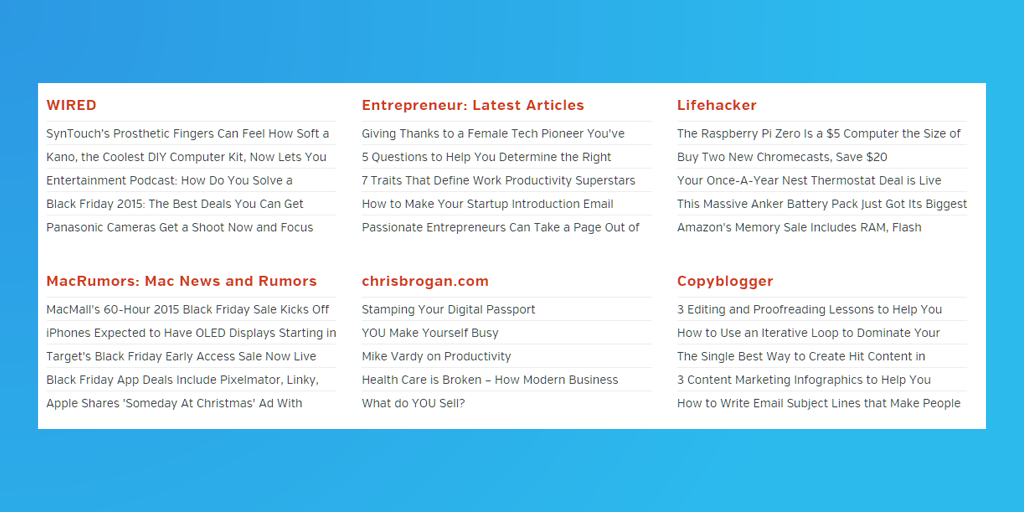Your boss has just asked you to write an email telling your customers their free trial has ended and encouraging them to upgrade to premium. But writing isn’t your thing and you could use some copywriting examples.
I mean, where do you start? What do these emails look like? If you had a swipe file, you’d have a reference point straight away.
Swipe files are collections of material kept by creatives for easy reference, consisting of great material you can learn from. If you’re just starting out, you’ll probably want to start making one and be prepared for your next assignment.
It’s best to amass your swipe file as you go, quickly adding quality copywriting examples when you see them and tagging for easy reference. Keep reading to find out how to do this using Evernote. But first, let’s look at where you can find awesome material to get started.
Swiped.co
While relatively new, Swiped is actively archiving a large selection of new and classic ads, emails, pop-ups, sales letters, direct mail examples and more.
If you’ve already got some material for your swipe file, go ahead and upload it to Swiped! It survives on user uploads and is an amazing labor of love by Mike Schauer.

It was created because archives of ads are sparse, and if you’re a copywriter or advertisers without a hefty swipe file you’ll have to rely on the rare chance that someone has uploaded the advert you want to reference somewhere on the web.
As it turns out, most people don’t really like ads that much. More often than not, you won’t find what you’re looking for.
Swiped’s collection is small, but growing quickly and has an active community of marketers uploading their finds and even making annotations to highlight the effective elements.

Go forth and swipe.
Public domain advertising books
I’m the kind of person that feels uncomfortable jumping into a new topic without understanding the roots. The fact that plenty of advertising books are so old that they’ve fallen into the public domain is great, and Archive.org is the best place to pick up PDFs of these.
What surprised me was just how relevant the books were today.
Just because a book’s from the 1920s doesn’t mean that it’s out of date. We still respond to the same words and psychological triggers, regardless of whether it’s a print headline in a ’50s newspaper, a sponsored link on Google or a Facebook ad.
The books are also full of tested, high performing ads that you can clip into your swipe file.

Here are some free, public access advertising books with timeless, actionable lessons:
Scientific Advertising [PDF] — Claude C. Hopkins (1921)
Advertising, its principles and practice — Harry Tipper (1919)
Effective direct advertising; the principles and practice of producing direct advertising for distribution by mail or otherwise —Robert E. Ramsay (1888)
Better advertising; a practical manual of the principles of advertising — John Manly (1921)
The essentials of advertising — Frank Leroy Blanchard (1921)

If you want more about writing clear, easily-readable copy, see my post on business writing tips.
Sign up for as many newsletters as possible
If you’re working for a SaaS company like me, go ahead and sign up to the newsletters and free plans of as many products as you can. I recommend Close.io, Kissmetrics and Contently. To keep your inbox focused, you might want to use a separate email account for this so you can go in save any of the good ones for later without it cluttering your inbox.
Here are some great examples I’ve found so far from products and marketers alike:
Since we’re testing a model like this at Process Street, I try to keep as many emails from companies doing the same as possible. Now, if only I could remember to save them in a sensible place 🙁

I look forward to Backlinko‘s Brian Dean‘s periodical SEO course, SEO That Works because I love to see the copy he comes up with. Brian’s copy has an extremely confident tone, which is good because us humans love solid direction and being told what to do next.
And “I know you’re interested in the program because you’re reading this sentence right now”? Genius.
Newspapers on Google
When I was writing a branding case study on Ogilvy, I found that no one really documents adverts — even really influential ones. Your best bet to find old ads is using Google’s newspaper search.
Type this in Google: “keyword” site:news.google.com/newspapers
Replace keyword with a phrase from the advert you remember, like this:

You’ll get a list of results Google found by searching the actual text of scanned newspapers, ranging from the 1700s to the 2000s. Plenty of material!
Click on one of the links, and you’ll see the ad as it appeared originally, in high resolution:

Trending posts = good headlines
If you’re in need of some high-performing headline formulas, you can, of course, turn to Google to find some guy’s Big List of 30,000 Headline Formulas That Sell Like Crazy, or you can find the real thing: trending posts on Mashable, The New York Times, reddit, and more.
A quick look at the Mashable ‘What’s Hot’ section on their homepage today reveals beauts such as:
- This rare baby orange monkey will absolutely melt your heart
- 17 people who boldly decided ‘it’s not my job’
And my personal top pick of the day:
- Ranch dip saves convenience store from Darth Vader robber
You can find the same information on the New York Times site by scrolling 2/3 of the way down the page and finding their ‘Most Viewed’ section — I think that ‘Most Viewed’ is more likely going to be the section with the best headlines because whether someone clicks or not is 100% down to the headline.
Another option — go to the /r/all section of reddit. These are things that are the most popular reads right now on the ‘front page of the internet’
If you’re a tech writer, you’ll find a good deal of inspiration on the Popular page of TechCrunch, on the sidebar of any The Next Web article, or in the Technology section of AllTop — a site which, true to its name, collates all of the top posts from around the web.
Get copywriting inspiration from fiction
Ever seen Blade Runner? The book it’s based on, Do Androids Dream of Electric Sheep by Philip K. Dick has great TV advertisements. They’re reflected in the opening of the film, with a futuristic Time Square-style panorama.
But it’s not just product placement I’m talking about — while not applied copywriting, it’s still the kind of thing to take note of because it comes from an unexpected and interesting source. Here’s a quote from the book for an advertisement convincing the survivors of a nuclear war to emigrate to another planet:
“The custom-tailored humanoid robot — designed specifically for YOUR UNIQUE NEEDS, FOR YOU AND YOU ALONE — given to you on your arrival, absolutely free, equipped fully, as specified by you on your departure from Earth”
What about the huge, evil corporation in Wall-e, Buy ‘N’ Large?
Or the spookily persuasive Big Brother in 1984? The point is to get you thinking out of the box about what is and isn’t copywriting. Just because it isn’t selling a real product doesn’t mean it isn’t useful.
Award-winning adverts
It’s safe to say that award-winning ads wouldn’t have got an accolade if they had rubbish copy. For example, check the archive of the 2015 winners of the CLIO awards, or the Best of Show section for the American Advertising Awards.
They have the kinds of ads you probably haven’t seen on TV, and the CLIOs celebrate entries from all around the world, like this advert from Columbian agency Sancho BBDO:
Swipe from the most famous copywriters in the world
If you want to learn copywriting, these guys should be your teachers. William Bernbach, David Ogilvy, John Caples, Claud Hopkins and Joe Sugarman, to name a few. These are guys who have either written for the biggest brands in the world, or written books that have influenced those who have. Here are some examples of their copy you should add to your swipe file:
A collection of Bill Bernbach ads collated by AdWeek, including his famous Lemon ad for Volkswagen.

A gallery of Ogilvy’s ‘big ideas’ from Ogilvy & Mather (since these are quite small images, you can find the full versions by using the Google Newspaper search method I mention earlier in the post)
A collection of the 35 headline formulas from the classic book Tested Advertising Methods, written by John Caples who made this ad:

Get a free copy of Scientific Advertising by Claude Hopkins, the book Ogilvy thought must be read 7 times by anyone who wants to go into advertising.
And finally, Joe Sugarman. Here are two ads in PDF format you can download right now: ‘Checkbook with a Brain‘, ‘Airline Outrage!‘ and ‘Bubble Gums‘.
Your swiped copywriting examples in Evernote
The quickest place to store and organize copywriting examples is Evernote. Kate already wrote about how she used it to improve her writing workflow and improve her research process, and the same kinds of techniques also apply here.
First, you’re going to want to download Evernote, if you don’t already have it. Make sure you also install the Evernote Web Clipper so you can save material from around the web.
Create a new notebook and call it ‘Swipe File’. Share it with any of your colleagues who might also benefit so you can both see material each other has swiped.

A lot of the material in my swipe file is from my inbox. You can email it straight to your Evernote once you’ve found out your unique address.
To do this, click ‘Tools’, then ‘Account Info’, and you’ll see an email address there. To send notes directly to your Swipe File notebook, append the subject line with @Swipe File.
Happy swiping!
I hope this leads you to some helpful material. If you get anything really interesting, drop a link for me in the comments — I’m always looking for inspiration, and it’s not usually found by taking material from big collections of haphazardly collated material, so remember to do your own thing!
Goodbye ’til Tuesday. 🙂
P.S — see this post on business writing tips for instructions on writing crystal clear copy.







 Workflows
Workflows Projects
Projects Data Sets
Data Sets Forms
Forms Pages
Pages Automations
Automations Analytics
Analytics Apps
Apps Integrations
Integrations
 Property management
Property management
 Human resources
Human resources
 Customer management
Customer management
 Information technology
Information technology









Benjamin Brandall
Benjamin Brandall is a content marketer at Process Street.